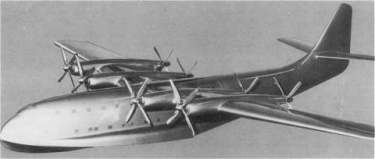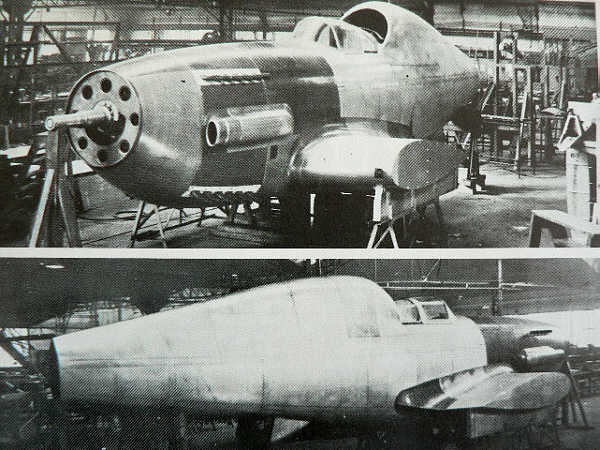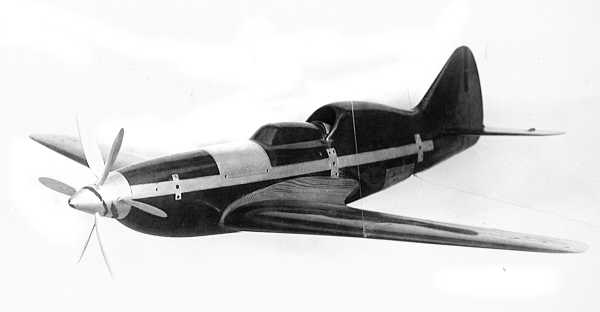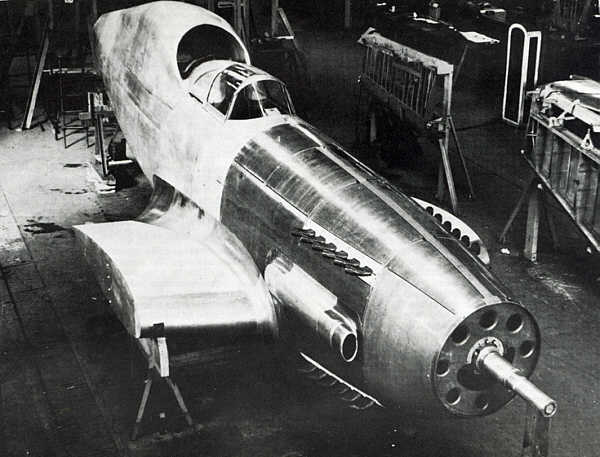 Dornier Do 214 is a multi purpose flyingboat originally designated number P 93 for a heavy transporter at first. The Göppingen Gö 8 were used to test for the project .Proposed powerplants were to be 8x Daimler Benz DB 613 piston engines.The front propellers had a 5.0 m (16' 5") diameter, the rear had a 4.6 m (15' 1") diameter. The rear propellers were driven by an extension shaft and were also hinged, which allowed the rear propellers to be raised during takeoff for water clearance . Fuel capacity consisted of 66000 liters in the huge fuselage and 1500 liters contain in each wing.A single fin were added and all 8 engines were monitored by a flight engineer from the central station .The Airliner variant crew are twelve men: a captain, two pilots, navigator, radio operator, two flight engineers, two stewards, two hostesses, and one crew member held in reserve and forty passengers could be carried in comfort and 2.6 tons of freight and luggage could be carried in the lower fuselage storage area. In 1943, a mockup was reconstructed to investigate the best placement of the gun turrets and other military stores but then the flying boat was no longer needed due to worsening war situation.
Dornier Do 214 is a multi purpose flyingboat originally designated number P 93 for a heavy transporter at first. The Göppingen Gö 8 were used to test for the project .Proposed powerplants were to be 8x Daimler Benz DB 613 piston engines.The front propellers had a 5.0 m (16' 5") diameter, the rear had a 4.6 m (15' 1") diameter. The rear propellers were driven by an extension shaft and were also hinged, which allowed the rear propellers to be raised during takeoff for water clearance . Fuel capacity consisted of 66000 liters in the huge fuselage and 1500 liters contain in each wing.A single fin were added and all 8 engines were monitored by a flight engineer from the central station .The Airliner variant crew are twelve men: a captain, two pilots, navigator, radio operator, two flight engineers, two stewards, two hostesses, and one crew member held in reserve and forty passengers could be carried in comfort and 2.6 tons of freight and luggage could be carried in the lower fuselage storage area. In 1943, a mockup was reconstructed to investigate the best placement of the gun turrets and other military stores but then the flying boat was no longer needed due to worsening war situation.Specification
Span:60 m
Length:51.6 m
Height:14.3 m
Wing Area:500 m²
Empty Weight:76000 kg
Loaded Weight :145000 kg
References:http://www.luft46.com/dornier/do214.html
http://en.wikipedia.org/wiki/Dornier_Do_214







